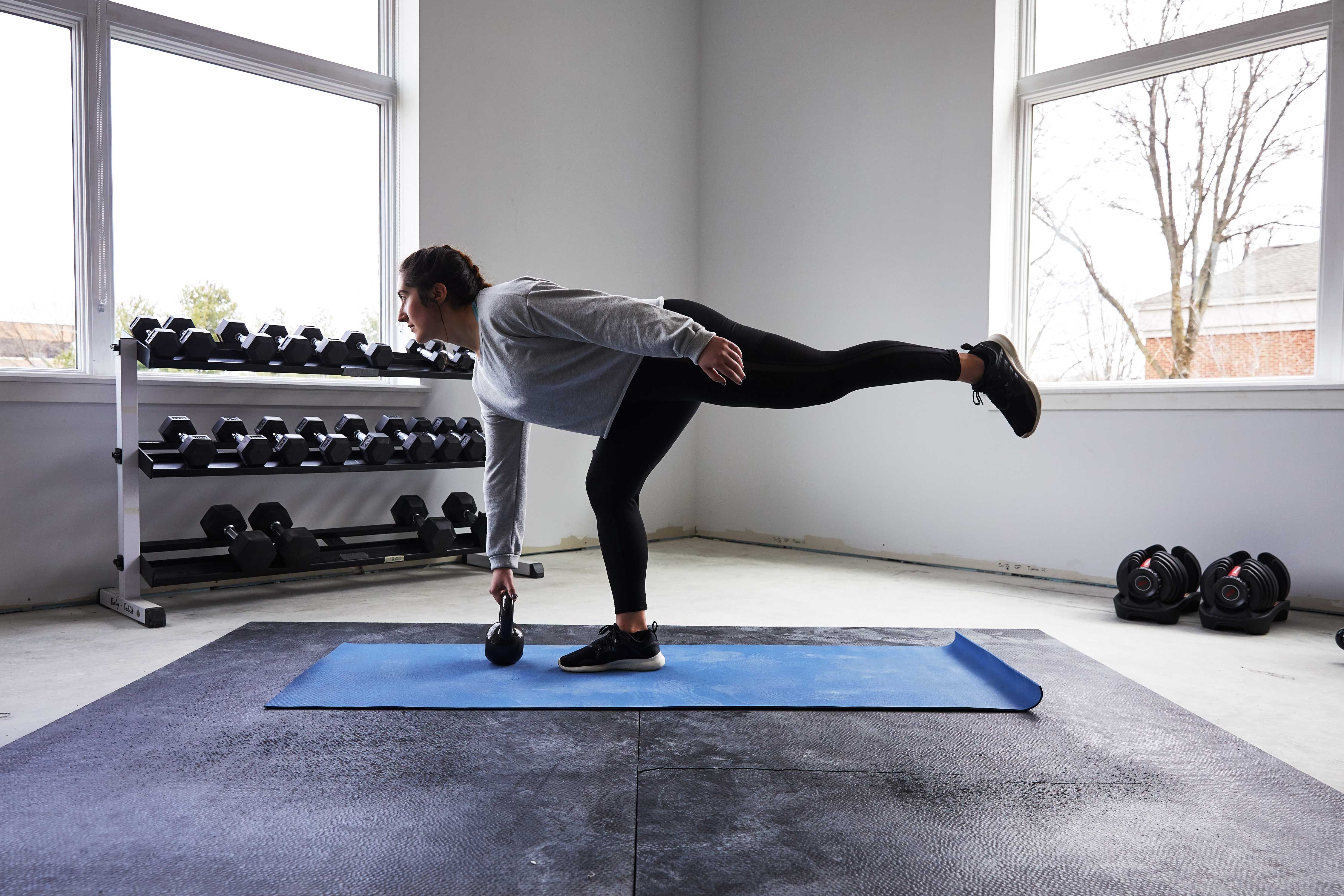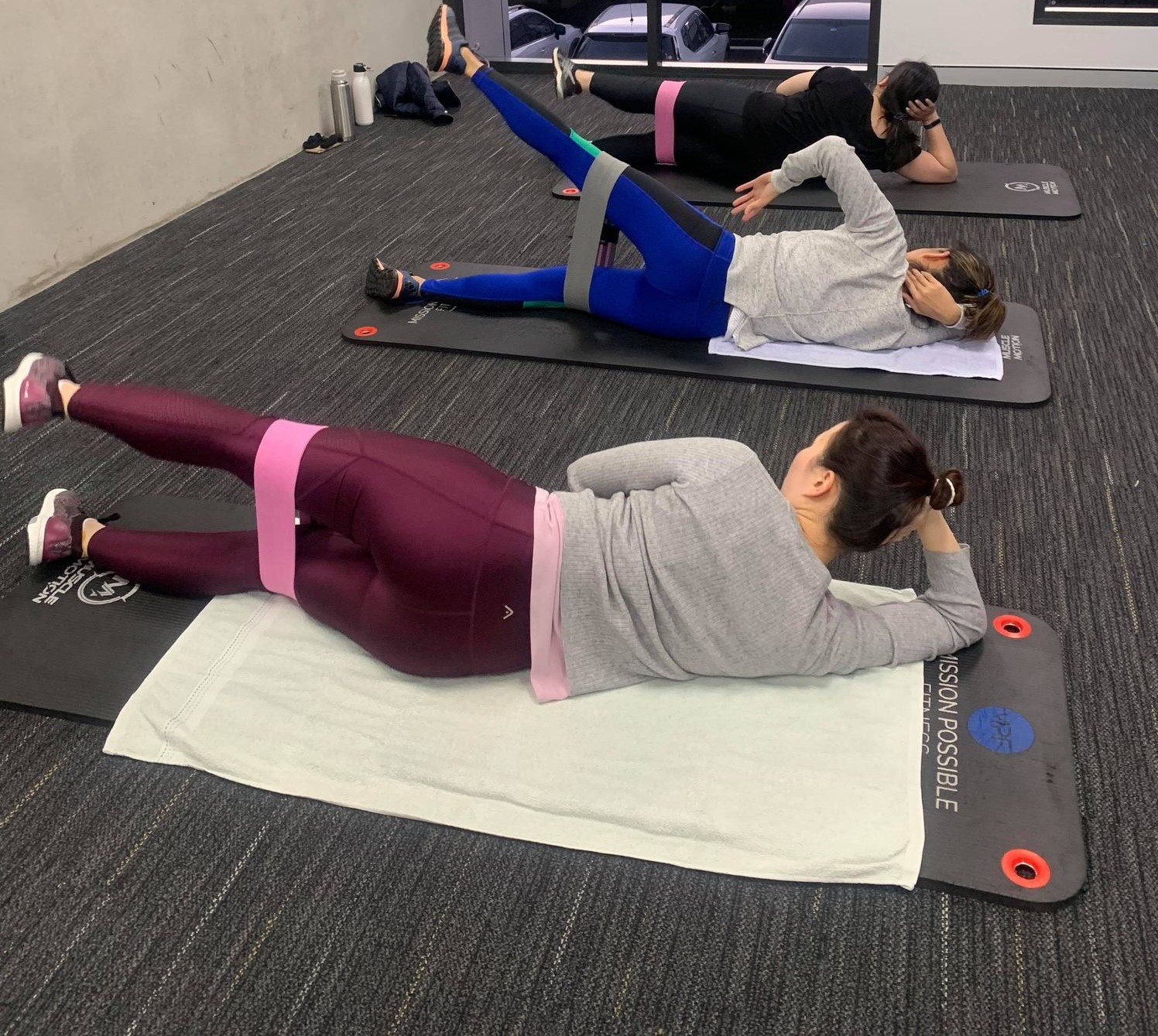The four muscles comprising the glutes, and their roles and functions are:
- Gluteus maximus – hip extension from flexed position
- Gluteus medius – hip abduction, pelvis stability while standing
- Gluteus minimus – support & control pelvic movements
- Tensor fascia lata (TFL) – hip flexion & abduction

Glute weakness actually contributes to many lower extremity dysfunctions and injuries such as patellofemoral pain syndrome, ITB syndrome, ACL tears, lower back pain, and hamstring strains. This is especially important since most people are not aware of how little they are using their glutes when performing lower limb exercises. When the glutes are underactive and not able to be effectively recruited the entire kinetic chain is disrupted, and other smaller muscles (e.g. the hamstrings, quadriceps, and calves) are forced to compensate and perform the majority of the work. When the hamstrings become dominant, they interfere with the recruitment of the glutes during hip extension exercises (squats, deadlifts, glute bridges etc) which can make it harder to build the strength of the glutes. This can result in a few issues:
- Hip flexors become tight and prevent reaching full range of hip extension1, the end of the movement where gluteus maximus is at its most effective
- Over-utilising lumbar flexion and extension in bending and straightening movements since the glutes are not being recruited as the primary extensor can cause lower back pain from overuse of the back extensor muscles
- Insufficient pelvic stabilisation where glutetus medius is underactive and the thigh moves into an adducted and internally rotated position, pulling the knees inward into valgus collapse resulting in knee pain

Interventions targeting appropriate glute activation are effective at developing strength and endurance, muscle recruitment patterns, and proprioception2. Gluteal strengthening exercise programs have been shown to be successful in improving patellofemoral pain syndrome3, 4, hamstring function, and gait biomechanics. Mission Possible Fitness ABT classes strategically incorporate evidence-based exercises including glute activation band work5, proprioception training, static & dynamic balance and stability, plyometrics, strength, and power6,7,8 to target these muscles in their specific movement and supporting roles. These classes are a great opportunity to learn more about whether you are correctly activating your glutes or want to build strength and improve the function and movement quality of your legs and core.
- Mills M, Frank B, Goto S, Blackburn T, Cates S, Clark M, Aguilar A, Fava N, & Padua D (2015) Effect of restricted hip flexor muscle length on hip extensor muscle activity and lower extremity biomechanics in college-aged female soccer players. International Journal of Sports Physical Therapy. 10(7): 946-954
- Faude O, Rossler R, Petushek EJ, Roth R, Zahner L, & Donath L (2017) Neuromuscular adaptations to multimodal injury prevention programs in youth sports: A systematic review with meta-analysis of randomized controlled trials. Frontiers in Physiology. 8(791): 1-15
- Earl JE & Hoch AZ (2010) A proximal strengthening program improves pain, function and biomechanics in women with patellofemoral pain syndrome. The American Journal of Sports Medicine. 39(1): 154-163
- Tyler TF, Nicholas SJ, Mullaney MJ, & McHugh MP (2006) The role of hip muscle function in the treatment of patellofemoral pain syndrome. The American Journal of Sports Medicine. 34(4): 630-636
- McBeth JM, Earl-Boehm JE, Cobb SC, & Huddleston WE (2012) Hip muscle activation during 3 side-lying hip-strengthening exercises in distance runners. Journal of Athletic Training. 47(1): 15-23
- Cameron ML, Adams RD, Maher CG, & Misson D (2009) Effect of the HamSprint Drills training programme on lower limb neuromuscular control in Australian football players. Journal of Science & Medicine in Sport. 12(1): 24-30
- Foreman TK, Addy T, Baker S, Burns J, Hill N, & Madden T (2006) Prospective studies into the causation of hamstring injuries in sport: A systematic review. Physical Therapy in Sport. 7(2): 101-109
- Rogers DK (2013) Risk factors for hamstring strains and strategies for their prevention in Australia’s man football codes: A review of the literature. Journal of Australian Strength & Conditioning. 21(4): 55-68
